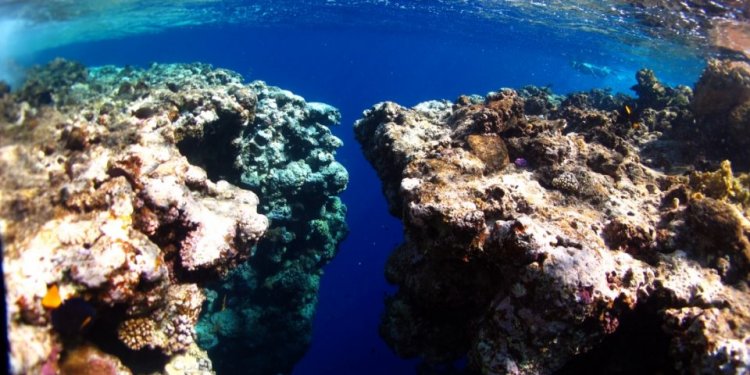
The Blue Hole Egypt
In the eastern shore of Egypt's Sinai Peninsula, a few miles north associated with the town of Dahab, is a scuba diving and snorkeling web site known as the Blue Hole. Each and every day, divers result in the journey from Dahab by jeep or camel, desperate to explore the coral-lined, 394-foot-deep underwater sink-hole referred to as Blue Hole.
At the water's edge, beside some wooden lounge chairs, is a faded, hand-painted sign. Decorated with images of fish, an amiable dolphin, and a bubble-blowing diver, it checks out "EASY ENTRY - AZURE HOLE." It's only a few legs from the indication into the sink-hole.
Specialized divers — those who venture strike the 130-foot limit recommended for recreational scuba diving — love the Blue Hole because its uncommon framework provides a unique challenge. From the northeast region of the sink hole, 184 foot below the area, is a horizontal tunnel that leads toward available ocean. Referred to as Arch, the 85-foot-long passageway is hard to enter as a result of darkness, poor exposure, and down currents that grab at a diver's fins. But with fish wriggling by into the quiet depths and coral formations catching a person's eye, it really is certainly breathtaking.
In April 2000, Russian diver Yuri Lipski strapped on an environment container and a helmet digital camera, packed his gear with weights, and plunged to the Blue Hole. He never ever resurfaced.
Lipski passed away at only over 300 foot underwater. Only at that level, your body is subject to nitrogen narcosis, that may play havoc from the mind by inducing overconfidence, euphoria, hallucinations, confusion, and impaired view. It didn't assist that Lipski had one container full of environment — technical scuba divers tend to be better offered by numerous tanks full of trimix, a combination of air, nitrogen, and helium that reduces narcosis.
Whenever a diver went to retrive Lipski's human anatomy in the demand of their parents, he made an unnerving breakthrough: the video footage captured by Lipski's helmet digital camera was still undamaged. The doomed diver had taped his very own death.
Lipski's last moments are actually on YouTube. Named "Fatal Diving Accident Caught On Tape, " the six-minute movie features garnered over eight million views. Though his face is never noticeable, his distress is palpable and haunting — what starts since a routine diving deteriorates into panicked thrashing while he gets to be more disoriented. Clouds of kicked-up sand billow into view as Lipski's respiration rate increases. In the long run, he removes the respiration device from his lips additionally the framework goes nevertheless.
Lipski isn't the just diver having died during the Blue Hole. On a cliff face on the road causing the website tend to be 14 memorial plaques aimed at lost scuba divers. There is Karl Marx, an Austrian who perished in 2008. There is James Smith, whoever rock checks out, "don't allow worry stand-in the way of one's dreams." He passed away in water in 2003, elderly 23. There's a stone for Daniel Malak and Tarek el Kadi, pals who died in hole on a single day in 1988.
These stones represent just a portion of the deaths in the Blue Hole. There is no official count, but approximately 130 individuals have lost their particular life truth be told there within the past fifteen years. If something, the site's reputation — it's nicknamed "Diver's Cemetery" — has just enhanced the selling point of the place for scuba divers who would like to test their particular limits.

















